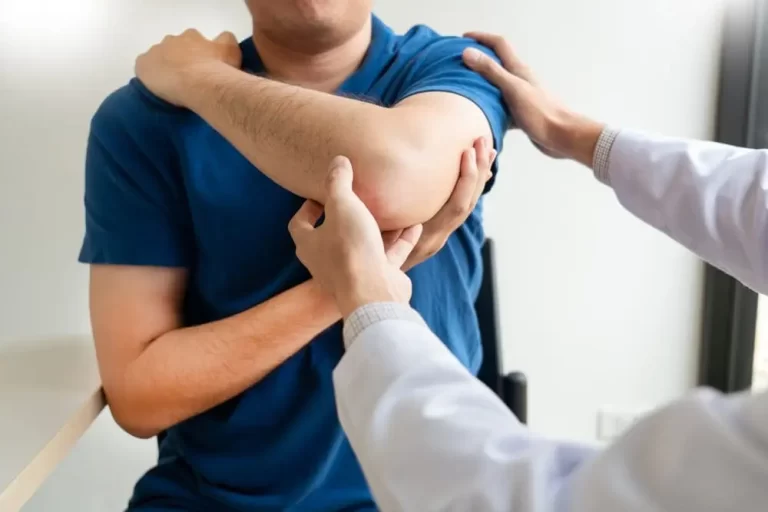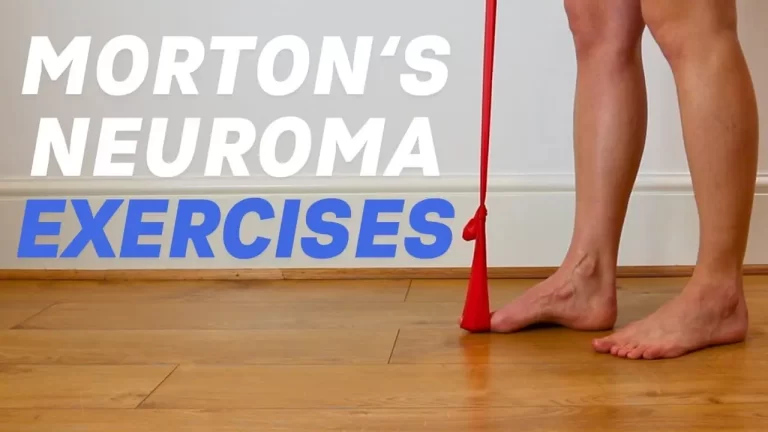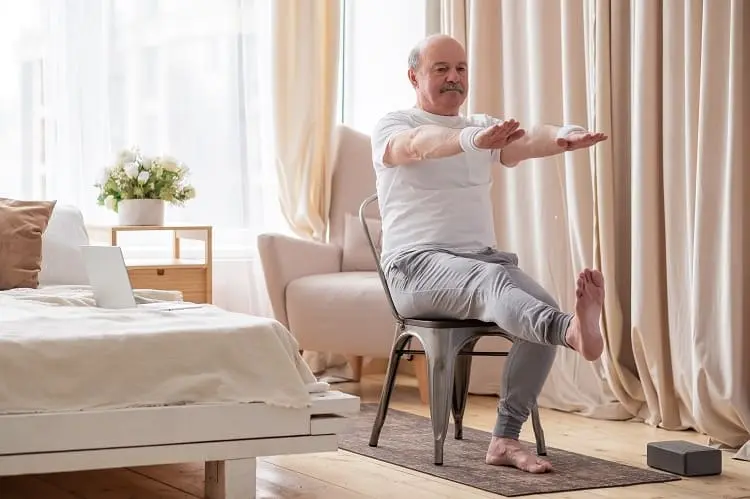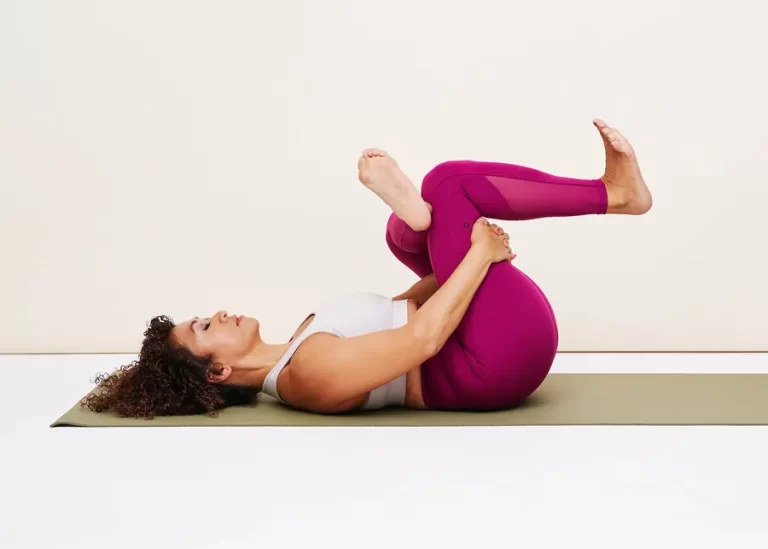Heel Slide Exercise: Muscle worked, Benefits, How to do?
The Heel Slide exercise is a fundamental movement often used in physical therapy to improve knee flexibility and strength. It’s particularly beneficial for individuals recovering from knee surgery, injury, or those experiencing stiffness due to arthritis.
This exercise involves sliding the heel along a flat surface, such as a bed or floor, towards the buttocks while keeping the leg in a relaxed position. It’s an effective way to increase the range of motion, enhance joint mobility, and promote muscle activation in the quadriceps and hamstrings without placing excessive strain on the knee joint.
What is the Heel slide Exercise?
- Another name for this exercise is heel drag.
- An exercise that works your muscles from your hips to your heels is called a Heel slide.
- The goal of this exercise is to increase the hip and knee joints’ range of motion.
- Lower body circulation will be improved by this activity.
- Your leg is worked from the buttocks to the heel during this exercise.
- In this position, you should extend your knee as far as you can and slip your heel back up to your buttocks.
- This exercise also lessens back and hip pain.
- To perform heel slides, simply extend your leg away from your body, bend your knee, and slide your heel toward your buttocks.
- These are easy leg exercises.
- Heel slides are intended to extend your knee’s range of motion.
- Support the knee and leg muscles.
What muscles are involved in a Heel slide?
- Calf muscle
- Quadriceps muscle
- Hamstrings muscle
The advantages:
- Heel slides are usually used to speed up recovery the body following surgery or an injury. They are an easy method to maintain physical activity, particularly in cases where mobility is limited.
- Heel slides help mobility, flexion, and flexibility by extending the range of motion in your knee.
- They also strengthen your hip, leg, and muscles, ligaments, and tendons.
- Additionally, using heel slides to keep your leg moving helps to improve circulation and relax pain, both of which improve your general well-being.
What kinds of Heel slide exercises are there?
Here’s an explanation of the five different ways to perform heel-sliding exercises.
Lying heel slides
- You will be performing this exercise while lying supine on a bed or plinth, with your leg straight in the starting position.
- Next, you must bend your knees to bring your heels closer to your buttocks.
- Hold this position for a few seconds.
- Finally, to fully stretch the knee, softly straighten it and slide your heels.
- Then return to your neutral position.
- Then relax.
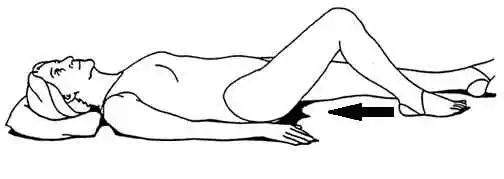
Wall heel slides
As you slide your heel along the wall during this exercise, you can also loop your unaffected foot below your opposite foot for more support.
- Place your hips so they are only a few inches from the wall while you rest on your back.
- When you flex your unaffected leg, the sole of your foot should be up against the wall.
- Press the heel against the wall while expanding the affected leg.
- Try to flex your knee as far downward as you can while bending it slowly.
- Keep your posture for a few seconds.
- Next, place your unaffected foot below your opposite foot to help raise your foot back to its starting position.
- Then return to your neutral position.
- Then relax.
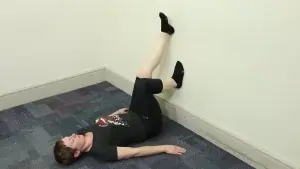
Chair heel slides
Use an armchair if at all possible. During the entire exercise, constantly press your thighs against the chair.
- Begin by taking a comfortable seat in the chair on the ground with your legs extended.
- Back your heel as close to the chair as you can.
- Hold this position for a few seconds.
- Return to the beginning position with your foot slid.
- Then relax.
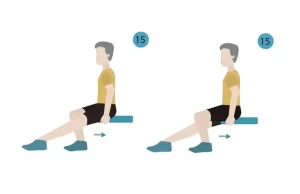
Seated heel slides
- Seated on the table or bed, extend your legs in front of you.
- Sliding your affected heel along the floor toward your buttocks, have your foot flexed.
- Hold this position for a few seconds.
- Return to the beginning position by sliding your heel.
- Then relax.
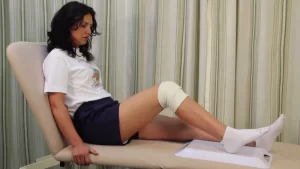
There are some heel-sliding tips available:
- Increasing the amount of pressure to finish the exercise can make things worse, particularly in older people.
- Warming up is a must before beginning any training program.
- If you are unable to move your heel freely, use a heated pad.
- Utilize a napkin to make easier the movements.
- Move slowly and properly with each movement.
- If you start to feel pain during your exercise, stop.
- When exercising, try to wear clothing that doesn’t significantly limit your range of motion. As an alternative, dress loosely.
When did you not perform this exercise?
- If your doctor suggests that you relax.
- If your doctor recommends that you not move your leg because of a shattered bone.
- When performing this exercise, avoid lifting your foot off the bed if you have a total hip replacement and must keep to the 90-degree guideline.
Summary:
Heel slides can be performed independently or as part of a more extensive exercise program. Make it a priority to improve your mobility and range of motion while simultaneously strengthening your strength and stability. Try out different variants and see which ones help you the most, including with pain relief.
Consult a fitness or medical expert for advice if you’re unclear about the exercises that would be most beneficial for you. In particular, if you’re recovering from surgery or an injury, pay attention to your body and refrain from pushing yourself too quickly or forcefully. To stay with your outcomes as you heal and advance, keep up your regular practice of these exercises.
FAQ:
Why are heel slides beneficial?
You can increase the range of motion in your knee by using heel slides. The tissues surrounding the knee and leg muscles are also strengthened and stretched by them. This reduces the possibility of further injury and speeds up the healing process.
Which muscles are worked out by heel slides?
Exercises involving heel slides work the calf, hamstring, and gluteus maximus muscles.
What is the recommended duration for heel slides?
For optimal effects, heel slides should be performed every day. You might need to perform these exercises several times a day, depending on how severe your problem is. The optimal frequency for your particular needs can be found with the help of your physician or a physiotherapist.
Can beginners benefit from practicing heel slides?
Since heel slides are low impact and can help build lower body strength, they’re a wonderful workout for beginners.
What are the advantages of heel slides?
Ankle stability and mobility can be improved by performing heel slides. They may help by improving the range of motion, strengthening the muscles surrounding the ankle joint, and lowering the possibility of ankle injury. Furthermore, heel slides help enhance balance and coordination, which is advantageous for running and jumping.
How many heel slides a day ought I to perform?
How many heel slides you should do a day will vary depending on your fitness level, flexibility goals, and any special recommendations from a medical or fitness specialist. Generally speaking, as your flexibility and comfort level increase, you can begin with fewer repetitions and gradually increase them. Working each leg for 2-4 sets of 10-15 repetitions is the standard recommendation. In light of this, you would execute 10-15 slides with your right leg and then 10-15 slides with your left leg, repeating the process for two to four sets.
Do heel slides help in the healing of an ACL?
Your quadriceps and hamstrings will get stronger with these exercises, which will improve the stability and general functionality of your knee. Exercises like heel slides, quad sets, and straight leg raises can help you regain your strength and balance within weeks of surgery.
How does a heel exerciser get used in physical therapy?
This heel exerciser is used for rehabilitation and strengthening of the ankle and heel.
This heel exerciser helps avoid foot injuries, improves flexibility, balance, and general stretch, and strengthens the muscles in your calves.
It is frequently utilized in the physical therapy and rehabilitation of the ankle and heel.
References:
- P. Tirgar (2023j, Dec. 13). Exercise using a heel slide: muscles exercised, health benefits, how to perform? Clinic for Mobile Physiotherapy. Heel-slide exercise: https://mobilephysiotherapyclinic.in/
- R. N. M. Crna (2019, March 19). Eight Meniscus Tear Exercises. Exercises to Meniscus Tears: https://www.healthline.com/health/sports-injuries/8-exercises
- Physical Therapy Activities. (n.d.-b). [Video]. The heel slides exercise can be performed in the following manner: https://www.physitrack.com/exercise-library/128
- Image 2, Cornell Video – Heel Slides on Wall (n.d.). Cornell Films. Foot slides on the wall: https://www.cornell.edu/video
- Image 3, C. M. Team, May 13, 2024.A Comprehensive Visual Guide to 21 Chair Exercises for Seniors. The Mobility of California. Seniors Can Engage in 21 Chair Activities with Visual Aids at https://californiamobility.com/
- Image 4, 2024, April 17; Strover, S. Heel Slides: mACI. https://www.kneeguru.co.uk/KNEEnotes/primers/a-z-rehabilitation-exercises


